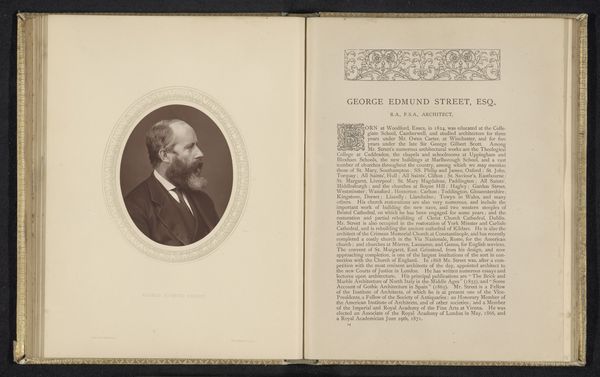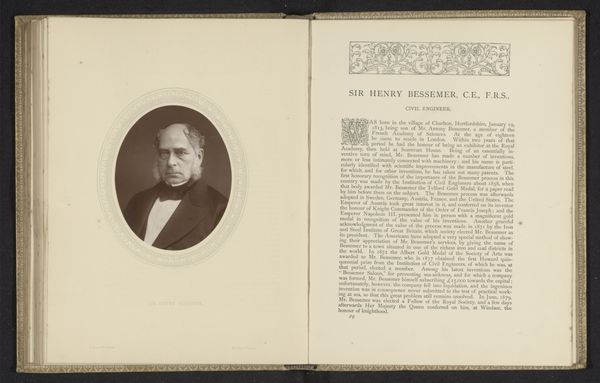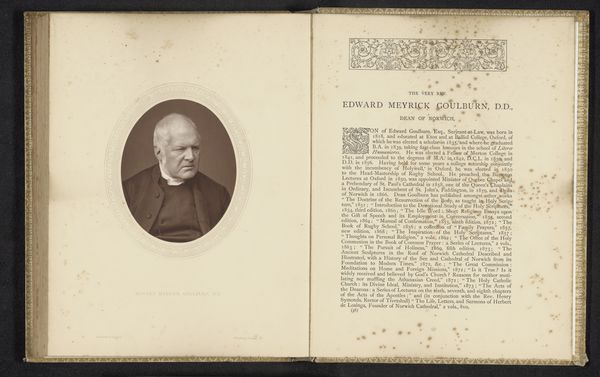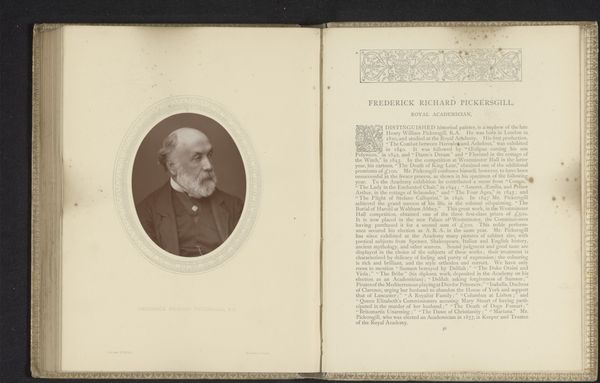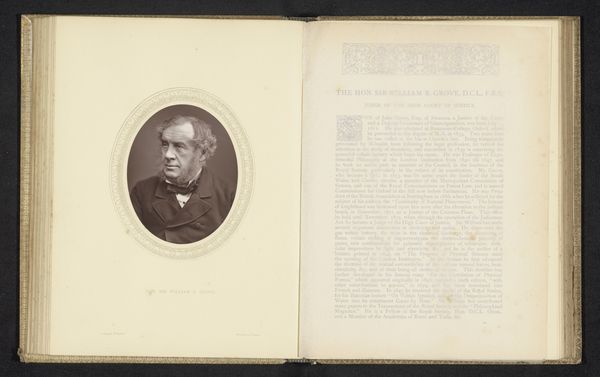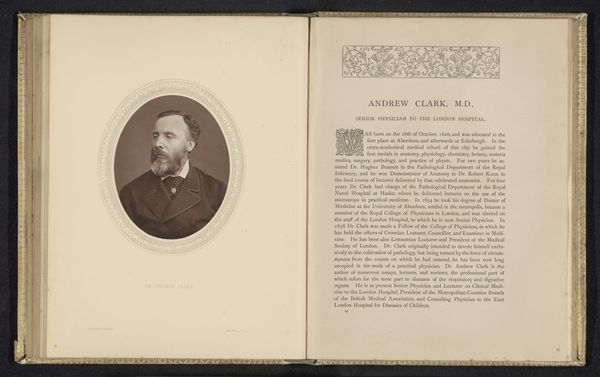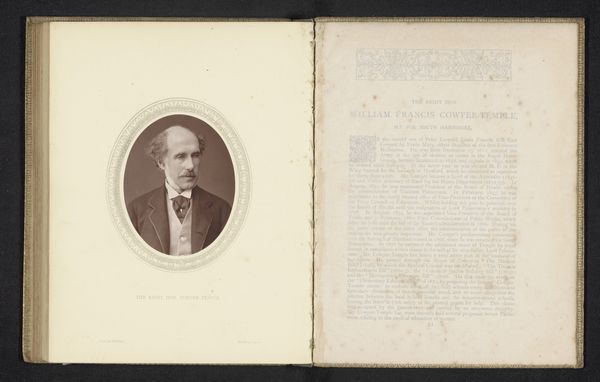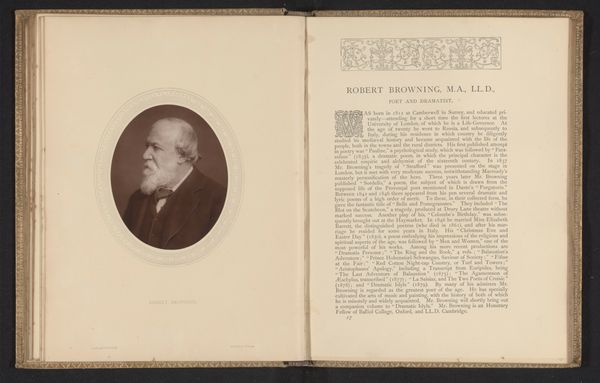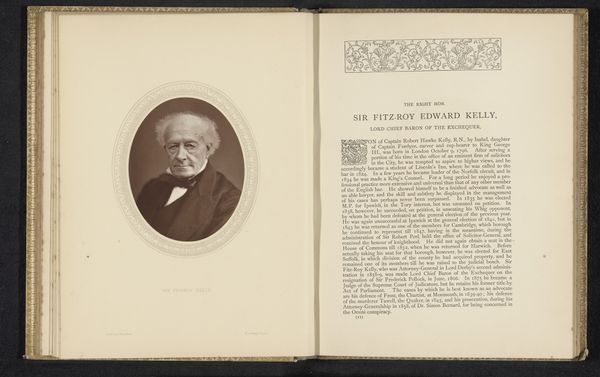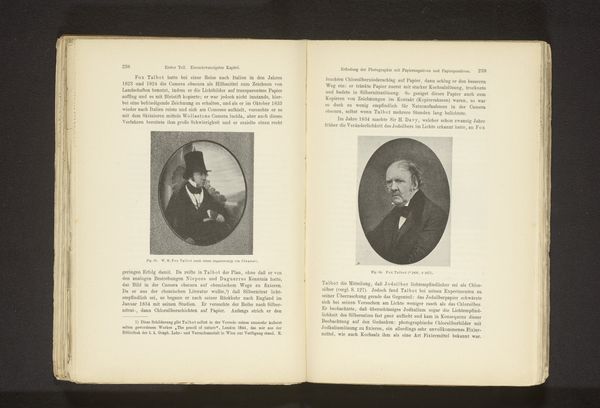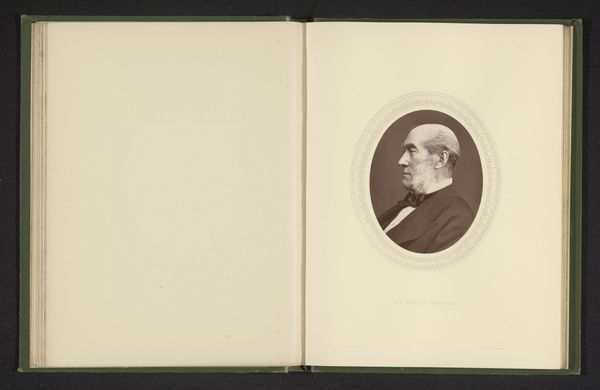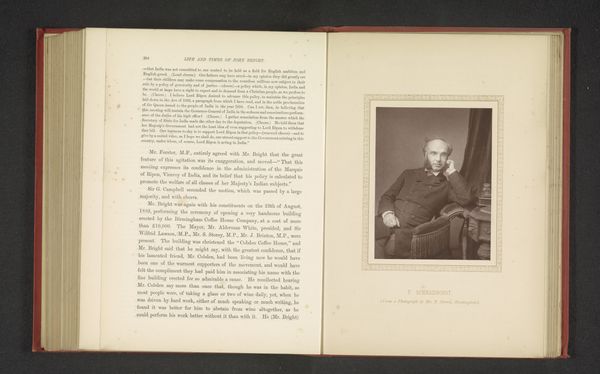
print, photography
#
portrait
# print
#
photography
#
academic-art
Dimensions: height 115 mm, width 89 mm
Copyright: Rijks Museum: Open Domain
Curator: This photographic print from before 1880 presents the Reverend Canon Lightfoot. I find myself pondering the public perception of religious figures during this period. Editor: It’s strikingly muted in tone, almost sepia-like, focusing intensely on his features and, I’d say, an impression of severe thoughtfulness. The printing method surely lends it a timeless feel. Curator: The Reverend Lightfoot was a significant figure in the Church of England and academia. Lock & Whitfield, the photographic studio, captured many prominent individuals; their work reflects the increasing professionalization and public role of photography at the time. Editor: Absolutely. Consider the material process; the sitter must’ve been carefully positioned, the plate painstakingly prepared. How might the controlled conditions of studio photography influence the message conveyed? Curator: It allowed for deliberate construction of an image that projects authority and intellect, carefully managing the subject's presentation to enhance his standing. The format mimics painted portraits of previous eras. Editor: And note the details - the collar, jacket and the carefully styled sideburns. These all signal his position within the ecclesiastical and social structures of the era. How was clothing perceived during that time? It plays a role here! Curator: Clothing certainly reinforced social distinctions. Academic dress and clerical garb communicated professional standing. This image presents Lightfoot as both scholar and clergyman. Editor: This image-making then wasn’t solely a technical practice, but very much a craft intertwined with the projection and upholding of social order through carefully selected materials and manufactured visuals. Curator: A potent observation. This portrait and others like it promoted and validated cultural hierarchies through readily available visual representations. Editor: Ultimately, this is a compelling object study of status construction and representation in the late 19th century. Thank you for sharing a social and political context around this photograph. Curator: A fascinating deep-dive for me, highlighting the intersections of labor, social context, and portraiture in photographic history. Thank you.
Comments
No comments
Be the first to comment and join the conversation on the ultimate creative platform.
